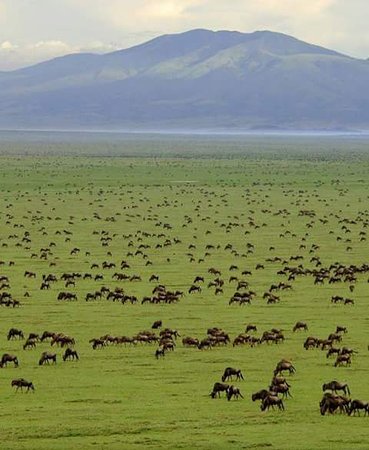Witness the Spectacle: Serengeti Migration by Numbers
Witness the Spectacle,The Serengeti Migration is not just a journey; it’s a symphony of nature, a ballet of survival, and a spectacle unmatched anywhere else on Earth. Every year, millions of wildebeest, zebras, and gazelles embark on this epic odyssey across the vast plains of East Africa, making it one of the most extraordinary wildlife events on the planet. Let’s delve into the numbers behind this awe-inspiring phenomenon and explore why it’s a must-see for any traveler.
2 Million: The Number of Wildebeest
At the heart of the Serengeti Migration are the wildebeest, with a staggering population of around 2 million individuals. These iconic creatures are the protagonists of the migration, driving the rhythm of this natural spectacle with their instinctual need to follow the rains and find fresh grazing lands.
200,000: Zebras Joining the Trek
Accompanying the wildebeest are over 200,000 zebras, their striking stripes adding a mesmerizing contrast to the sea of hooves that traverse the Serengeti. Together, these two species form a symbiotic relationship, each benefiting from the other’s unique strengths to navigate the challenges of the journey.
500,000: Gazelles Completing the Ensemble
Completing the ensemble are half a million gazelles, adding grace and agility to the migration. With their nimble movements and keen senses, they contribute to the dynamic energy of the Serengeti plains, where every step is a dance and every moment a testament to survival against the odds.
8000 Square Miles: The Area Covered
The Serengeti Migration spans an astonishing 8000 square miles, encompassing a vast expanse of grasslands, woodlands, and riverine ecosystems. This immense area serves as both the stage and the backdrop for the unfolding drama of the migration, providing ample space for the wildlife to roam and thrive.
480 Kilometers: The Route of the Great Migration
From the southern plains of Tanzania to the lush grasslands of Kenya’s Masai Mara, the Great Migration covers a distance of approximately 480 kilometers. Along the way, the herds must navigate treacherous river crossings, predator-infested territories, and ever-changing landscapes, testing their resilience at every turn.
1.5 Million Wildebeest Calves Born Annually
The Serengeti Migration is not just a spectacle of movement; it’s also a celebration of life. Each year, an estimated 1.5 million wildebeest calves are born during the calving season, a time of abundance and vulnerability as the herds gather on the southern plains to give birth and nurture the next generation.
Conclusion:
The Serengeti Migration is a testament to the power of nature, a reminder of the interconnectedness of all living things, and a humbling display of resilience in the face of adversity. By understanding the numbers behind this remarkable event, we gain a deeper appreciation for the complexities of the natural world and the importance of preserving its wonders for generations to come. So, pack your bags, embark on this journey of a lifetime, and bear witness to the Serengeti Migration—a spectacle by numbers, but an experience beyond measure.

